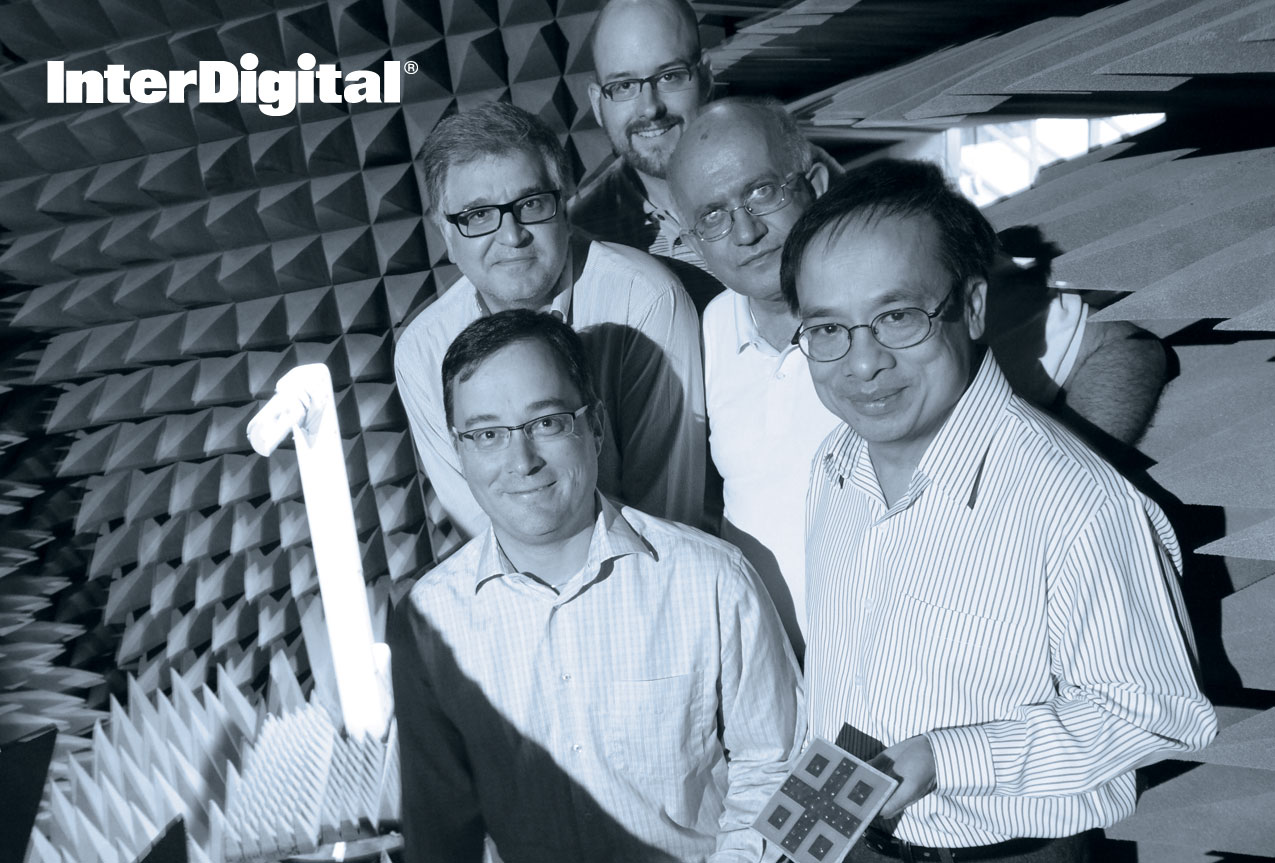Taking a Byte Out of the Network to Solve the Bandwidth Crunch in the Wireless World

(Left to right, front row to back row): Michel Desgagné, InterDigital; Dr. Tho Le-Ngoc, McGill University; Dr. Benoît Champagne, McGill University; Dr. Mohammad Reza Soleymani, Concordia University; and Patrick Tooher, InterDigital.





TELECOMS
A Prompt-Supported Team Develops ICT Innovation to Enhance the Mobile Multimedia Experience


Year over year, use of networked multimedia applications on mobile devices such as the Blackberry™, iPhone™, and the iPad™ continue to skyrocket around the world. You Tube™ alone generates more than two billion views per day – nearly double the prime time audience of all three major broadcast networks combined. When coupled with the growing use of streaming video and TV, online gaming and other data rich services on mobile devices, it is no wonder the global mobile software market is expected to reach $79.7 billion by 2017.
As mobile multimedia usage continues to climb, so do the challenges experienced by users. The most prominent issue: the limited bandwidth to meet growing consumer demand. There are simply more and more users competing for this capacity. This impacts the quality, speed and consistency of data transmission to the mobile device while using a multimedia application, and ultimately, the user experience.
It is a challenge that Dr. Tho Le-Ngoc, Canada Research Chair in Broadband Access Communications, and Professor with McGill University, is tackling head-on. With critical support from Prompt and NSERC, he strives to develop new ways to optimize the utilization of this finite bandwidth, and enable more users to put this capacity to work. To achieve this goal, he is collaborating with InterDigital, a leading company that develops fundamental wireless technologies that are at the core of mobile devices, networks, and services worldwide; Dr. Benoît Champagne and Dr. Mohammad Reza Soleymani, Professors of Electrical and Computer Engineering at McGill and Concordia University respectively.
The team aims to improve wireless system capacity by developing advanced collaborative communications and adaptive signal processing techniques that take advantage of multiple dimensions such as time, space and user location when transmitting and receiving radio signals. The research is done in the context of future 4G networks whereby wireless data transmission will migrate from the traditional single point-to-point system architecture to a multi-point architecture where multiple wireless nodes work together to enhance overall performance. “We want to create solutions that increase system capacity, enable service providers to maximize the utilization of the available bandwidth, and deliver a consistent user experience throughout the coverage area,” says Dr. Le-Ngoc.
The innovative methods and algorithms that emerge from this collaborative R&D project are of keen interest InterDigital. “Our company specializes in inventing solutions for more efficient wireless networks and creating a richer multimedia experience years ahead of market deployment,” said Michel Desgagné, Vice President of R&D with InterDigital. “Consistent with our technology roadmap, this Prompt-supported project is enabling us to analyze complex technical challenges in the wireless space, and then integrate key learnings and outcomes into our technology development programs. We are able to capitalize on this funding because Prompt understands our business model and its implication for R&D partnerships.”
According to the Montreal-based Vice President, “Our collaboration with McGill and Concordia has proven to be valuable on many fronts. The funding provided by Prompt enabled us to broaden the scope of our R&D, and garner about three times the value for every dollar invested on this project. We have also hired a number of graduate students who have gained very relevant expertise during the course of the research projects, allowing them to contribute to our R&D efforts the day they join us.”

